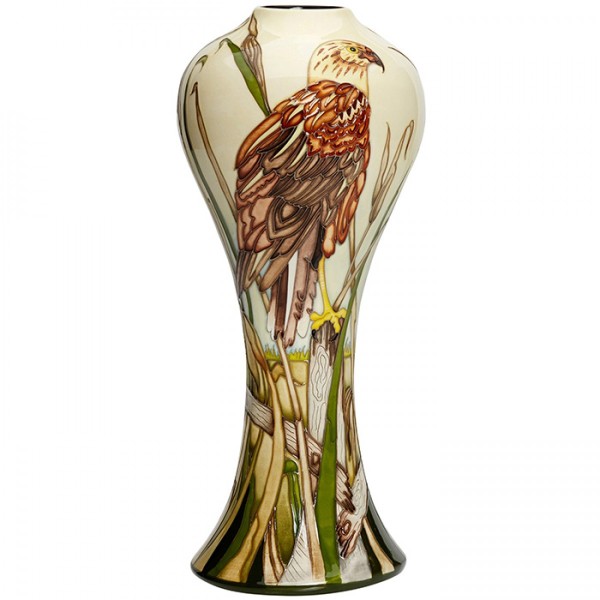Pictured above, Marsh Harrier by Kerry Goodwin
RSPB Minsmere certainly lives up to its reputation for being the crown jewel of the RSPB’s reserves. Located on the Suffolk coast, it is one of the richest wildlife sites in Eastern England, home to rare birds, mammals, butterflies, plants and other creatures great and small. The reserve consists of marshes, reedbed and open water; it has mature woodland and damp scrubby areas as well the heathland and, of course, the coast which borders the reserve, famed for heralding the return of the avocet to our shores after more than a century.
For 75 years, visitors have heard bitterns booming or the piercing shrill 'eeyah' of the marsh harriers and seen the avocets from one of the many hides on the reserve. Moorcroft celebrates this landmark year with The RSPB Minsmere 75th Anniversary Collection.
Perhaps the most renowned part of the reserve is The Scrape known primarily for providing a haven for the RSPB signature bird, the Avocet, with its iconic silhouette featuring as the RSPB logo. Victorian hunters and egg collectors nearly drove them to extinction. Their return to the Suffolk coast for breeding occurred after the land around RSPB Minsmere was flooded to protect us from invasion and is one of the great avian success stories of the twentieth century. On April 8 1947, these black and white birds with their curious blue legs returned to our shores for the first time in more than a century. Led by the landowner, Capt Stuart Ogilvie, a band of conservation brothers carried out almost constant surveillance of the nest site to protect it from egg collectors.

Now avocets almost appear to come to life in this iconic Moorcroft plaque complete with their distinctive black and white plumage, sweeping up-turned bills, and long blue legs-flying, feeding and breeding against an amber tide as chicks waddle in the dappled waters of a shallow lagoon dotted around breeding islands – known affectionately as The Scrape.
Another bird of affectionately championed by this reserve is the notorious Marsh Harrier. Reduced to a single breeding pair in Britain 50 years ago, the marsh harrier is now thriving in its Minsmere wetland stronghold. Whilst this is an RSPB success story, it is sobering to remember that this species is still as rare as the golden eagle in the UK.

Within an article on marsh harriers by Minsmere’s pioneering warden Bert Axell in the October – December 1971 edition, he wrote “Of the three harrier species which breed in Britain, the marsh harrier is by far the rarest. If you have visited the RSPB reserve at Minsmere, Suffolk, in recent years and seen the two or three pairs which breed there, you will, in fact, have been looking at rather more than half of this country's population of these magnificent raptors.”
The largest of the harriers, a female marsh harrier, complete with long tail feathers, forms an impressive silhouette on this Moorcroft limited edition for the RSPB as it nicks the sky like a razor with a sharp-cut chevron on a backdrop of blue over the Minsmere marshes and reed beds. On the reverse of the vase, a solitary male marsh harrier sits in pensive stillness, its silvery-grey tail and glistening wings of bluey-grey with black primaries clipped neatly behind him as the chestnut underparts streaked with brown and a darker rump allow onlookers to examine this glazed harrier with awe. With the curves of this remarkable Moorcroft shape (pictured at the top of this feature) mimicking the harrier’s chiselled beak and head, the result is dramatic.
